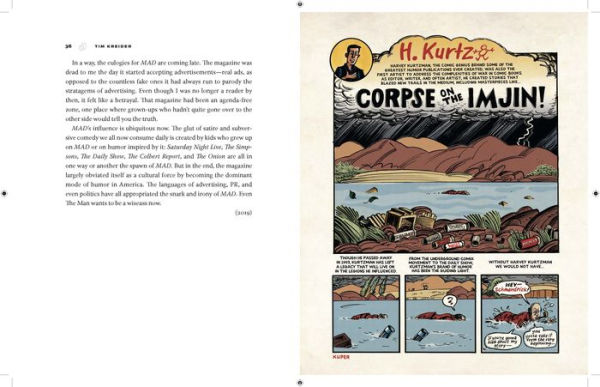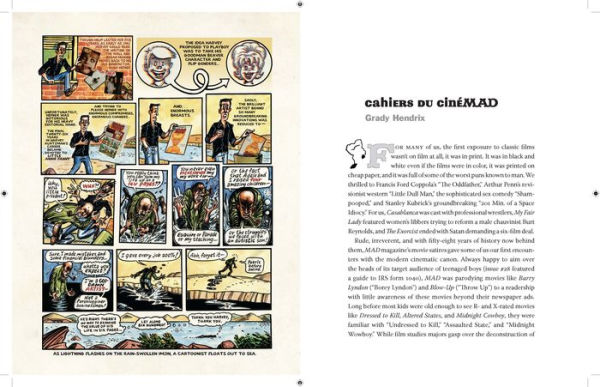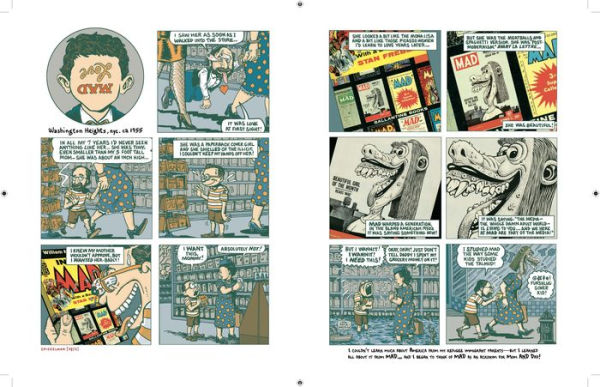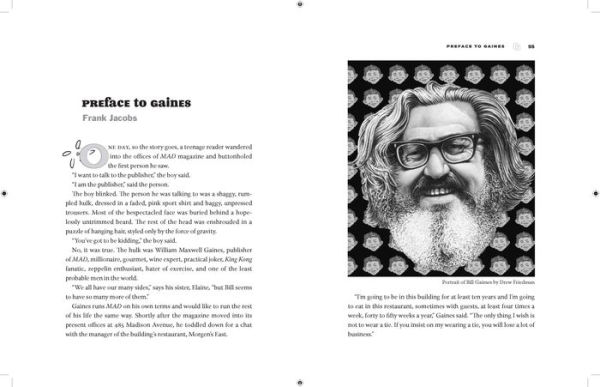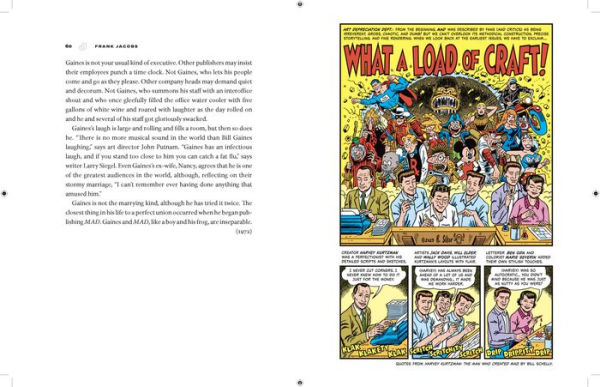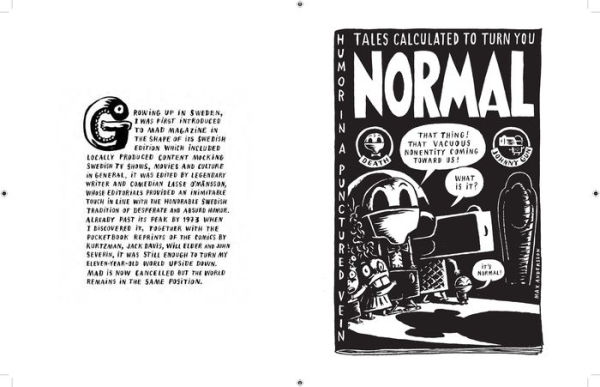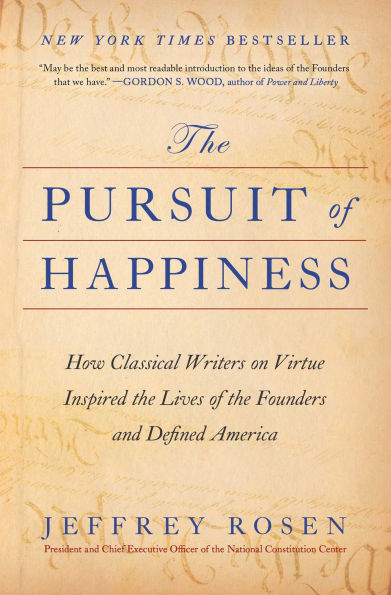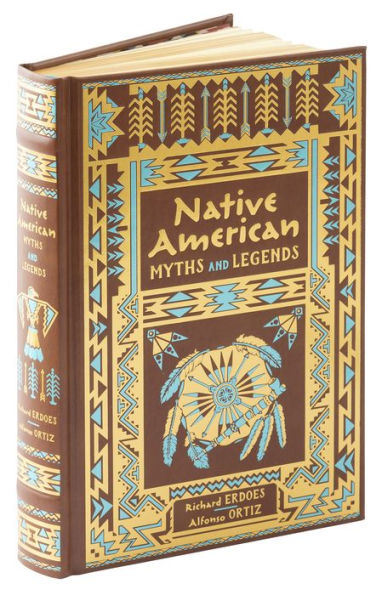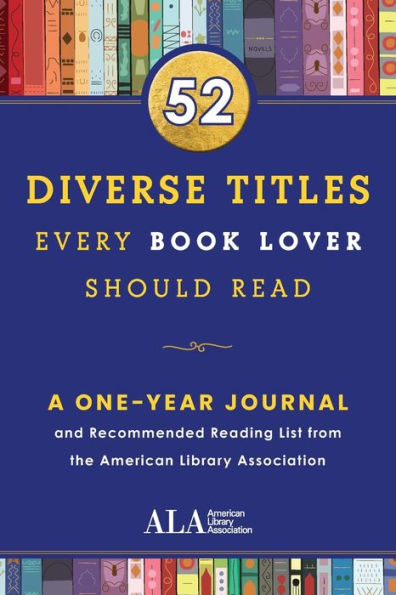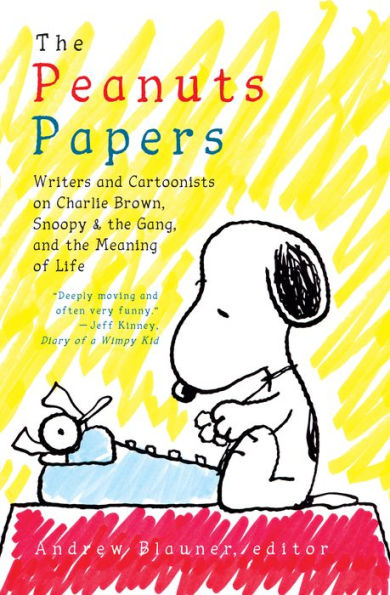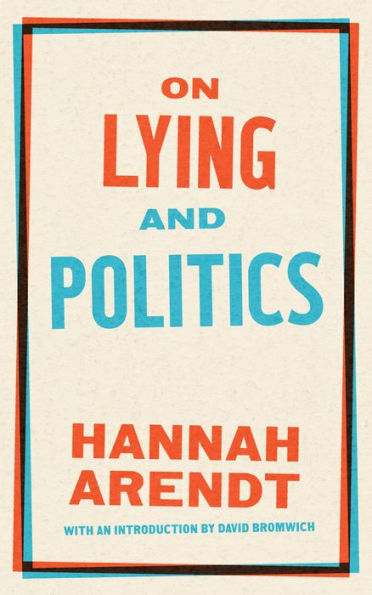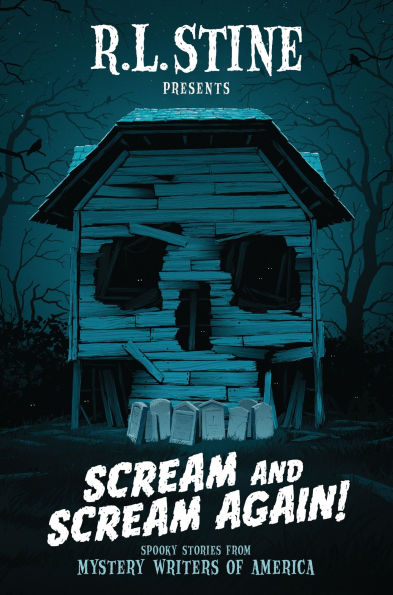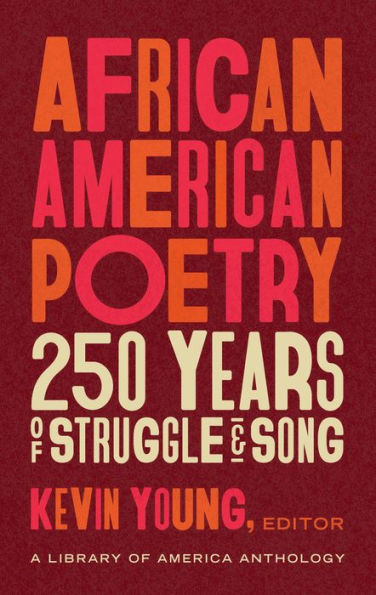Home
the MAD Files: Writers and Cartoonists on Magazine that Warped America's Brain!: A Library of America Special Publication
Barnes and Noble
Loading Inventory...
the MAD Files: Writers and Cartoonists on Magazine that Warped America's Brain!: A Library of America Special Publication
Current price: $21.95
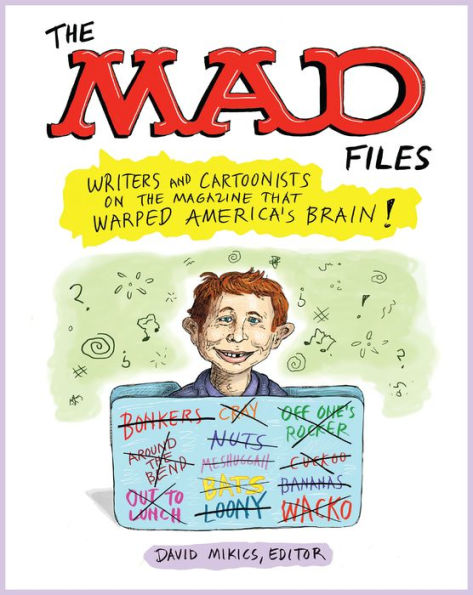
Barnes and Noble
the MAD Files: Writers and Cartoonists on Magazine that Warped America's Brain!: A Library of America Special Publication
Current price: $21.95
Loading Inventory...
Size: Paperback
*Product information may vary - to confirm product availability, pricing, shipping and return information please contact Barnes and Noble
Celebrate America's zaniest and most subversive magazine in 26 essays and comix from all-star contributors, including Roz Chast, Jonathan Lethem, and Grady Hendrix.
Before
SNL
and the wise-guy sarcasm of Letterman and Colbert, before
The Simpsons
and online memes, there was . . .
MAD
.
A mainstay of countless American childhoods,
magazine exploded onto the scene in the 1950s and gleefully thumbed its nose at all the postwar pieties.
became the zaniest, most subversive satire magazine ever to be sold on America’s newsstands, anticipating the spirit of underground comix and ’zines and influencing humor writing in movies, television, and the internet to this day.
Edited by David Mikics,
The MAD Files
celebrates the magazine’s impact and the legacy of the Usual Gang of Idiots who transformed puerile punchlines and merciless mockery into an art form. 26 essays and comics present a varied, perceptive, and often very funny account of
’s significance, ranging from the cultural to the aesthetic to the personal.
Art Spiegelman
reflects on how he “couldn’t learn much about America from my refugee immigrant parents—but I learned all about it from
”
Roz Chast
remembers how the magazine was “love at first sight. . . . It was one of my first inklings that there were other people out there who found the world as ridiculous as I did.”
David Hajdu
and
Grady Hendrix
zero in on
’s hilarious movie spoofs
Liel Leibovitz
delves into the Jewishness behind the magazine’s humor
Rachel Shteir
amplifies the often unsung contributions of
’s women artists.
Several essays are admiring profiles of the individual creators that made
what it was: Mort Drucker, Harvey Kurtzman, Al Jaffee, Antonio Prohias, and Will Elder. For longtime fans and new readers alike,
is an indispensable guide to America’s greatest satire magazine.
Before
SNL
and the wise-guy sarcasm of Letterman and Colbert, before
The Simpsons
and online memes, there was . . .
MAD
.
A mainstay of countless American childhoods,
magazine exploded onto the scene in the 1950s and gleefully thumbed its nose at all the postwar pieties.
became the zaniest, most subversive satire magazine ever to be sold on America’s newsstands, anticipating the spirit of underground comix and ’zines and influencing humor writing in movies, television, and the internet to this day.
Edited by David Mikics,
The MAD Files
celebrates the magazine’s impact and the legacy of the Usual Gang of Idiots who transformed puerile punchlines and merciless mockery into an art form. 26 essays and comics present a varied, perceptive, and often very funny account of
’s significance, ranging from the cultural to the aesthetic to the personal.
Art Spiegelman
reflects on how he “couldn’t learn much about America from my refugee immigrant parents—but I learned all about it from
”
Roz Chast
remembers how the magazine was “love at first sight. . . . It was one of my first inklings that there were other people out there who found the world as ridiculous as I did.”
David Hajdu
and
Grady Hendrix
zero in on
’s hilarious movie spoofs
Liel Leibovitz
delves into the Jewishness behind the magazine’s humor
Rachel Shteir
amplifies the often unsung contributions of
’s women artists.
Several essays are admiring profiles of the individual creators that made
what it was: Mort Drucker, Harvey Kurtzman, Al Jaffee, Antonio Prohias, and Will Elder. For longtime fans and new readers alike,
is an indispensable guide to America’s greatest satire magazine.
Celebrate America's zaniest and most subversive magazine in 26 essays and comix from all-star contributors, including Roz Chast, Jonathan Lethem, and Grady Hendrix.
Before
SNL
and the wise-guy sarcasm of Letterman and Colbert, before
The Simpsons
and online memes, there was . . .
MAD
.
A mainstay of countless American childhoods,
magazine exploded onto the scene in the 1950s and gleefully thumbed its nose at all the postwar pieties.
became the zaniest, most subversive satire magazine ever to be sold on America’s newsstands, anticipating the spirit of underground comix and ’zines and influencing humor writing in movies, television, and the internet to this day.
Edited by David Mikics,
The MAD Files
celebrates the magazine’s impact and the legacy of the Usual Gang of Idiots who transformed puerile punchlines and merciless mockery into an art form. 26 essays and comics present a varied, perceptive, and often very funny account of
’s significance, ranging from the cultural to the aesthetic to the personal.
Art Spiegelman
reflects on how he “couldn’t learn much about America from my refugee immigrant parents—but I learned all about it from
”
Roz Chast
remembers how the magazine was “love at first sight. . . . It was one of my first inklings that there were other people out there who found the world as ridiculous as I did.”
David Hajdu
and
Grady Hendrix
zero in on
’s hilarious movie spoofs
Liel Leibovitz
delves into the Jewishness behind the magazine’s humor
Rachel Shteir
amplifies the often unsung contributions of
’s women artists.
Several essays are admiring profiles of the individual creators that made
what it was: Mort Drucker, Harvey Kurtzman, Al Jaffee, Antonio Prohias, and Will Elder. For longtime fans and new readers alike,
is an indispensable guide to America’s greatest satire magazine.
Before
SNL
and the wise-guy sarcasm of Letterman and Colbert, before
The Simpsons
and online memes, there was . . .
MAD
.
A mainstay of countless American childhoods,
magazine exploded onto the scene in the 1950s and gleefully thumbed its nose at all the postwar pieties.
became the zaniest, most subversive satire magazine ever to be sold on America’s newsstands, anticipating the spirit of underground comix and ’zines and influencing humor writing in movies, television, and the internet to this day.
Edited by David Mikics,
The MAD Files
celebrates the magazine’s impact and the legacy of the Usual Gang of Idiots who transformed puerile punchlines and merciless mockery into an art form. 26 essays and comics present a varied, perceptive, and often very funny account of
’s significance, ranging from the cultural to the aesthetic to the personal.
Art Spiegelman
reflects on how he “couldn’t learn much about America from my refugee immigrant parents—but I learned all about it from
”
Roz Chast
remembers how the magazine was “love at first sight. . . . It was one of my first inklings that there were other people out there who found the world as ridiculous as I did.”
David Hajdu
and
Grady Hendrix
zero in on
’s hilarious movie spoofs
Liel Leibovitz
delves into the Jewishness behind the magazine’s humor
Rachel Shteir
amplifies the often unsung contributions of
’s women artists.
Several essays are admiring profiles of the individual creators that made
what it was: Mort Drucker, Harvey Kurtzman, Al Jaffee, Antonio Prohias, and Will Elder. For longtime fans and new readers alike,
is an indispensable guide to America’s greatest satire magazine.
